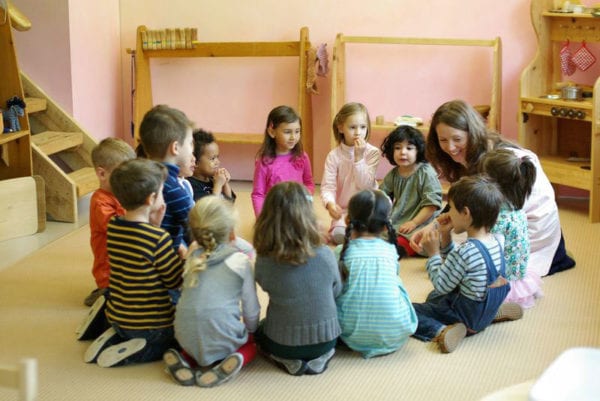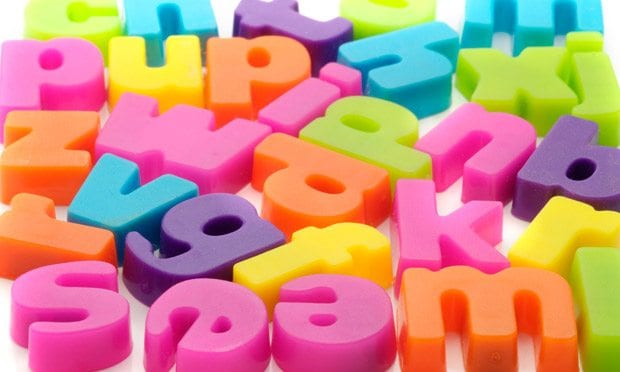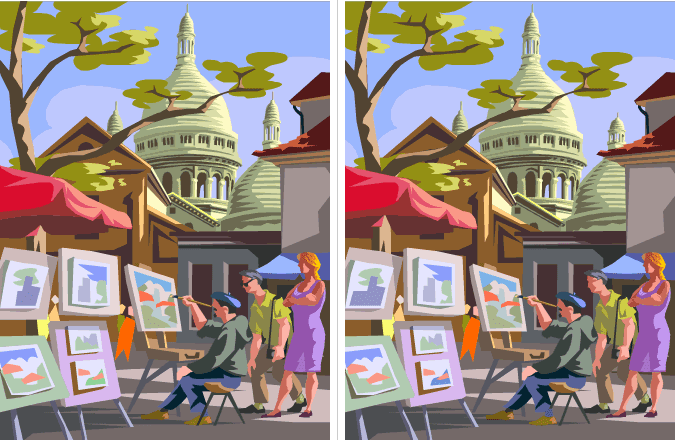5 Activities to Help Students Improve Their Working Memory
This year I've decided I'one thousand going to focus my bong ringer activities on building skills that I know my students demand. Many of them struggle with post-obit instructions and remembering textile from day to day. So we are going to spend time each twenty-four hour period working on activities that will help them improve their working retentiveness.
Here are five activities using a variety of variables—letters, numbers, words, and pictures—designed to help your students amend their working memory.

1. Correct Order of Things
For these activities, students need to exist able to recall information in the correct order.
Variation one: Two minute share
Pair students upwards and have partner #ane share three things they did that 24-hour interval. Partner #2 must echo them back to Partner #1 in guild. Then they switch.
Variation 2: I'one thousand going to the…
Have your students sit in a large circumvolve. One student begins by proverb "I'chiliad going to the [embankment, shop, school, etc.] and I'm bringing [an object y'all would bring with yous.] The adjacent person repeats the phrase, the first detail and adds an particular of their ain. The game continues effectually the circle until someone forgets an item or recalls them out of order, or until you reach your time limit.
Variation 3: Instant recall
A series of pictures, words or numbers is put up on the screen and left there for a few seconds. When they are removed, students have to remember the social club of the items by saying them out loud to a partner, writing them down or drawing them. To increase the difficulty, increment the number of items and decrease the amount of time they have to await at images.

2. When Did Yous Last?
Borrowed from When Was the Last Time?: Questions to Practice the Mind past Matthew Welp.
Requite students questions that examination their power of recall. For instance- When did you last drinkable lemonade/ tie your shoe/ make a paper plane/ arrange the volume on something? etc. Students can write downwards their answers in their journal or talk to a partner about them. All students can answer the aforementioned question or y'all can provide several and they tin can option. Notation: this could also exist a good get-to-know-y'all activity as well.

3. Letter Unscramble
Students partner up and one person stands with their back to the board. On the lath in that location are iv sets of four letters that tin form several words (for example: acer, bstu, anem.) The partner facing the board reads one set of messages to their partner. Their partner has 30 seconds to figure out what words can be made out of the letters without being able to encounter them. (for example: acer= acre, care, race). Each partner does this several times. Make this harder by cutting the time downward or adding more letters.
Easier variation: Use numbers instead of letters. The partner facing abroad from the board must they repeat the multi digit numbers in guild.

4. Card Recall
Students pair up with a deck of cards. Partner #1 flips five cards face up and gives Partner #2 a few seconds to await at them. So, Partner #ii then closes his or her optics as Partner #1 removes one of the five cards. Finally, Partner #two opens his or her eyes and has to recall which bill of fare is missing.

5. Spot the Deviation
Put two pictures that seem identical, only accept a few small differences up on the board or screen. Give students a brief period of time to discover as many differences as they can. For pictures like the one above, visit NeoK12.
What activities for building working memory have worked in your classroom? Share in the comments below.
threlkeldpless1969.blogspot.com
Source: https://www.weareteachers.com/working-memory/